Skype: neodalle-travel
Tel: +86 135 7447 2266
E-mail: sales@visitaroundchina.com
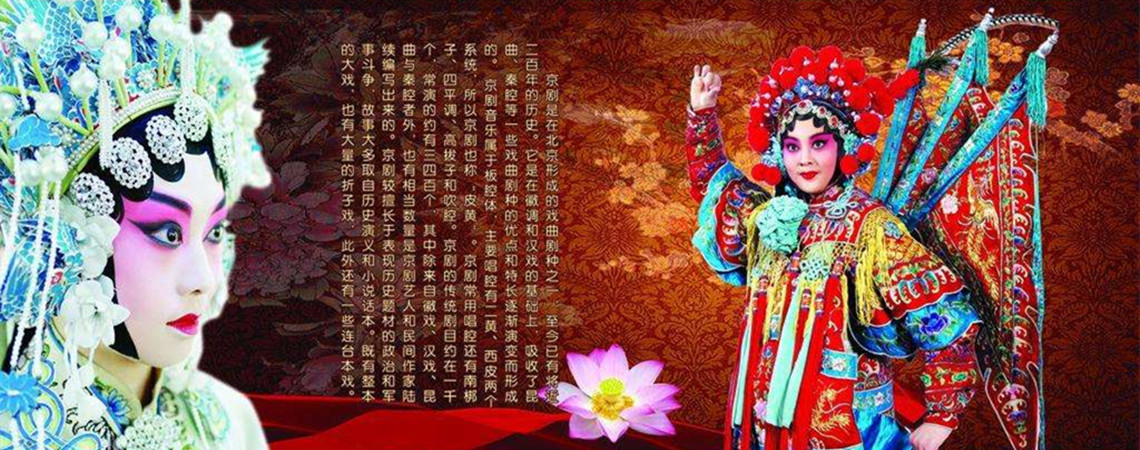
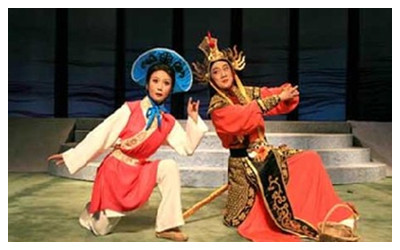 Pingju Opera, original name is Bengbeng Opera in Hebei, originates from the folk song and dance-Yangge, one of the principal flower fair activities to welcome the traditional new year.It incorporates musical elements from narrative song form and folk dance. Pingju Opera emerged around the 1910s in Tangshan, in North China's Hebei Province. In 1923, it was performed in Tianjin. and received its formal name,From then on,the folk roots and colloquial language allowed Pingju Opera to spread throughout most of northern China and beyond, and the name of Pingju opera was also widely spreaded in the country.
Pingju Opera, original name is Bengbeng Opera in Hebei, originates from the folk song and dance-Yangge, one of the principal flower fair activities to welcome the traditional new year.It incorporates musical elements from narrative song form and folk dance. Pingju Opera emerged around the 1910s in Tangshan, in North China's Hebei Province. In 1923, it was performed in Tianjin. and received its formal name,From then on,the folk roots and colloquial language allowed Pingju Opera to spread throughout most of northern China and beyond, and the name of Pingju opera was also widely spreaded in the country.
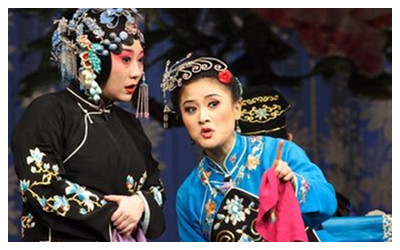 Its main content includes folk living stories, historical figures, and scenes of the four seasons. In Qing and Ming dynasties, many people took singing Yangge as profession, the tunes they sung took Lianhualao as the principle thing. By the end of Qing Dynasty, Yangge absorbed shadow show, versified story sung to accompaniment of a drum, both of which belonged to Laoting. Thus Yangge was changed into Bengbeng Opera, the old name of Pingju opera, which is rich in local features of east of Hebei province.
Its main content includes folk living stories, historical figures, and scenes of the four seasons. In Qing and Ming dynasties, many people took singing Yangge as profession, the tunes they sung took Lianhualao as the principle thing. By the end of Qing Dynasty, Yangge absorbed shadow show, versified story sung to accompaniment of a drum, both of which belonged to Laoting. Thus Yangge was changed into Bengbeng Opera, the old name of Pingju opera, which is rich in local features of east of Hebei province.The lists of Three Xiao opera were over hundred, most of them originated from the Xiaodan and Xiaochou opera or dramas of Bangzi, and the rest were compiled according to folk real life current events and hearsays ancient and modern legends historical novels and film. During the period of Three Xiao opera, in the 34th year of Emperor Guangxu in Qing Dynasty, because of the successive death of Guangxu and Cixi, Qing Dynasty government ordered that recreational activities were barred in hundred days, which caused the theatrical troupes of Bengbeng Opera landed in predicament, many of them were disintegrated.
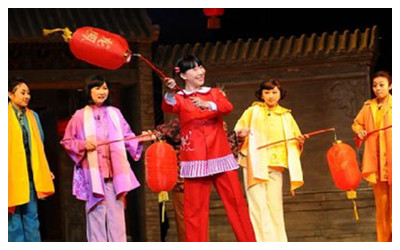 In fall of the same year, some artists established Qingchun Society. In order to prevent the government's ban on performance, they overall reformed the Three Xiao opera. They absorbed Bangzi mode and gong and drum, thus Bengbeng opera possessed the embryonic form of large drama. Bengbeng opera was named smooth tune Bangzi opera. In the first year of Emperor Xuantong, Yongsheng Tea Garden was set up in Tangshan. Qingchun Society was invited to perform for Yongsheng Tea Garden's open. The performance of Qingchun Society was greatly welcomed by numerous workers and audience. Thereupon, Qingchun Society got a firm foothold in Tangshan.
In fall of the same year, some artists established Qingchun Society. In order to prevent the government's ban on performance, they overall reformed the Three Xiao opera. They absorbed Bangzi mode and gong and drum, thus Bengbeng opera possessed the embryonic form of large drama. Bengbeng opera was named smooth tune Bangzi opera. In the first year of Emperor Xuantong, Yongsheng Tea Garden was set up in Tangshan. Qingchun Society was invited to perform for Yongsheng Tea Garden's open. The performance of Qingchun Society was greatly welcomed by numerous workers and audience. Thereupon, Qingchun Society got a firm foothold in Tangshan.
In order to firm Bengbeng opera's position in urban, the artists were on rush to write and rehearse new plays. By the first year of the Republic of China, the large dramas they produced, rearranged, grafted have reached more than 30 pieces, at the same time, the performance was perfected, the music for voices and accompaniments were improved. From then on, Bengbeng opera possessed new artistes style and features. By that time, the folk opera, which was pregnant in the mother's body of Yangge, talent showed itself in early of the Republic of China at long last. People at that time called it Tangshan Laozi, and named Pingju opera later.
In the 12th year of the Republic of China (1923), Jingshi Theatrical Troupe, which founded this type of drama, performed in Tianjin. Because the dramas they performed contained new meanings of punishing evil-doers and praising good-doers, warning and converting people, discussing the past and now, Lu Haihuan advised changing the name into Pingju opera. In the 25th year of the Republic of China, the famous actress Bai Yushuang filmed the movie Haitang Red. The press recorded the name of Pingju opera in the Public Paper. From then on, the name of Pingju opera was widely spreaded in the country.
Where to enjoy Pingju Opera ?
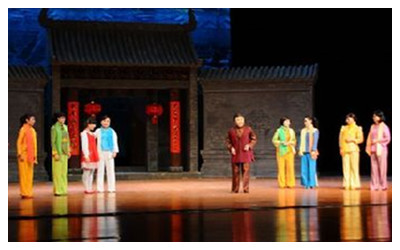 China Pingju Opera Grand Theater, located in Xiluoyuan in Fengtai District, is a very special Pingju theater in Beijing, which has a unique exterior design: paper-cut style copper Chinese characters at its gate and a unsymmetrical porch which features the modern style. This theater has its construction area covering 10,544 square meters, 800 seats and 18 VIP rooms on it second floor.
China Pingju Opera Grand Theater, located in Xiluoyuan in Fengtai District, is a very special Pingju theater in Beijing, which has a unique exterior design: paper-cut style copper Chinese characters at its gate and a unsymmetrical porch which features the modern style. This theater has its construction area covering 10,544 square meters, 800 seats and 18 VIP rooms on it second floor.
The main stage of it is equipped with advanced facilities, with its stage, light and audio effects being controlled by computers. It is also equipped with China’s first class 6-sound channel circling stereo film devices.
Lift stage : The main stage is 24 meters tall, 24 meters wide and 18 meters deep, and the proscenium is 14 meters wide and 8 meters tall. There are four parts that can be lifted and lowered. The music pool can be lifted or lowered, and there are 48 derricks and all kinds of light devices that support the performance on the stage.
 Ask Questions ?
Ask Questions ?